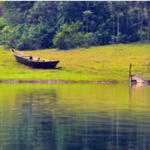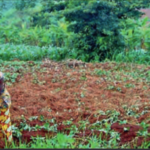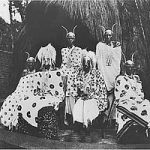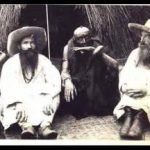The Clan
Clan names are the same whether they designate clans of Tutsi or Hutu — or Twa, for that matter. The Hutu generally feel that the clans are the same, but the Tutsi make a distinction between them, and say of the Hutu clans that they are impanga, i.e., “that which does not quite come up to” their Tutsi counterparts.
There are twelve different clan names on Remera. It is to be noted that the -sindi -shamboclassification is really part of the -shamboclan. -sindiis said to be the senior clan from which both -shamboand -nyiginyahave sprung, but, for some reason, in several -shambolineages there are occasionally members who still call themselves -sindi. Other clans, such as the -konomay be a subdivision of -egaclan, and the -yiruntua subdivision of the -cyaba, but this is not clear.
Clan organization is more important to the structure and history of Ruanda as a whole than to the local community. The part played by the clan in local social organization is limited. It comes into operation when a person is traveling; the voyager may ask hospitality of a clan member far from home.
It is strongly suspected by this researcher that similarity of clan name is used by the ruling Tutsi to infiltrate or rather to break-upthe clustering of households belonging to Hutu clan members on the Hill. The evidence for such a technique is difficult to gather, because it would have to be accomplished over a long period of time and tins evidence would be self-destroying if the technique were successful. There are hints, however, to show that it may exist.
On the eastern side of the Hill, in Kukamvumba and Gahama, no grouping seems evident, although part of the Abacyaba group of Hutu in Gahamais made up of members of one lineage. The general absence of grouping in Gahama — apart from the one exception named above — may be due to the fact that the kin and “feudal” ties ‘and interests of the ruling Tutsi of Remera draw them towards Bisenga, the Hill contiguous to Remera on the east. Their influence is therefore stronger in that direction.
On the summit, two Hutu groups must be pointed out: the Abasindi and the Abagesera. To these groups belong two of the oldest lineages on Remera. The Abasindi have kept some special integrity; the Abagesera, although still strong because of their seniority, have been specially split up. But, in fact, alliances on the Hill are effected on a lineage basis, and the clans as such play no role in local organization.
It is said that in primitive society, kinship structure forms the basis for social organization. It has been postulated by some that, as the society grows more complex, the kinship terminology is extended to new units of the growing social structure.The social structure could then be said to be kinship-structured, and the relationships therein, kinship-like or consisting of “artificial” kinship. However, during the course of the field investigation, it became more and more apparent that the structures in question are neither artificial, nor kinship. The cases compared are the lineage and a group called in tins work the nuclear feudal cluster. The latter is organized along the lines of the lineage with a father-like figure at its head, as in the lineage.
It must be kept in mind that the society (of which Remera is a part), was in the midst of a transitional period, even at the time the country was first occupied by Europeans. It stood, to be more precise, at that period of transition between a highly developed tribal government and an early form of State organization. The society even now is still close enough to tribal organization to be “kinship” regulated in some aspects, but it has evolved beyond that point in some of its other social aspects.
Beginning with the idea put forth by Dr. Radcliffe-Brown that primitive societies need a “wide-ranging” system of kinship, whereas more developed ones require only a “narrow-ranging” one,it is clear that primitive societies indeed need a wide-range system because the kinship system functions as the entire systemof socio- political control. It has, therefore, to encompass as wide a horizon as the society does. But when the society in question grows and extends beyond the family-regulated sphere how is this accomplished? The answer can be conceptualized in several ways. One solution might indicate that the system is extended by artificial means through the creation of extra-kin bonds structured on the principle of kinship and integrated in the kinship system. Then, as time passes, these relationships could be said to take on more and more autonomy, until they become completely independent of the kinship system, and are, in fact, an integrating mechanism that extends much farther thon the kinship system. As the society finally grows into state and nation, the kinship system would grow less in importance and shrink to a “narrow-range” system such as we have today in our own society.
Another hypothesis would hold that, at the level of a kinship-regulated society, it so happens that the kinship system, as we think of it, is merely co-extensive with the social system. The terms of the latter are essentially functional, and the functions are allocated to biologically differentiated statuses. But this is occidental and structurally irrelevant. As the social group expands, the terminology expands with the widening scope of social relations. It is not a question of “extending” kinship terms to people with no biological ties, but rather one of applying statusterms to all who came into the range of a given, socially functional relationship.
Indeed, if kinship systems were considered simply as systems of status relationships, then no problems arise from the developmental point of view. It means that this status structure spreads out in all directions in direct proportion to the expansion of the social organization, since it is an integral part of the organization. Thus, there is no difficulty in explaining “adoption”, which is the access to a new status. As the group grows, there is no difficulty in thinking of the patria potestaspassing from the pater familiasto the lord who becomes patro,and, eventually, to the State itself, which becomes patria.
It would seem that the second hypothesis gives a more satisfactory explanation of the pattern found in Remera. Once this strictly functional view of “kinship” is understood, it becomes easier to understand how a transfer of “kinship” status can be made outside of the “family” group. This is done consistently in Remera, and provides the essentials of a struggle between the centrifugal and the centripetal tendencies of the society. When speaking of the social organization of the people of Remera, it would be best, obviously, to drop the “kinship” terms entirely and the term “kinship” also. Unless new words are invented, however, the only alternative is to use the native terminology. This presents a double inconvenience. First, that of keeping in mind the meanings, as well as the words themselves. Second, the language itself makes “kinship” terms vary according to who is the speaker, although the relationship spoken of remains the same. Therefore, in spite of these comments on kinship, no attempt will be made to introduce the system on a new basis.
https://uk.amateka.net/the-clan/https://uk.amateka.net/wp-content/uploads/2021/04/rwanda.jpghttps://uk.amateka.net/wp-content/uploads/2021/04/rwanda-150x150.jpgModel CitizenshipClan names are the same whether they designate clans of Tutsi or Hutu — or Twa, for that matter. The Hutu generally feel that the clans are the same, but the Tutsi make a distinction between them, and say of the Hutu clans that they are impanga, i.e., 'that...BarataBarata rpierre@ikaze.netAdministratorAMATEKA | HISTORY OF RWANDA




